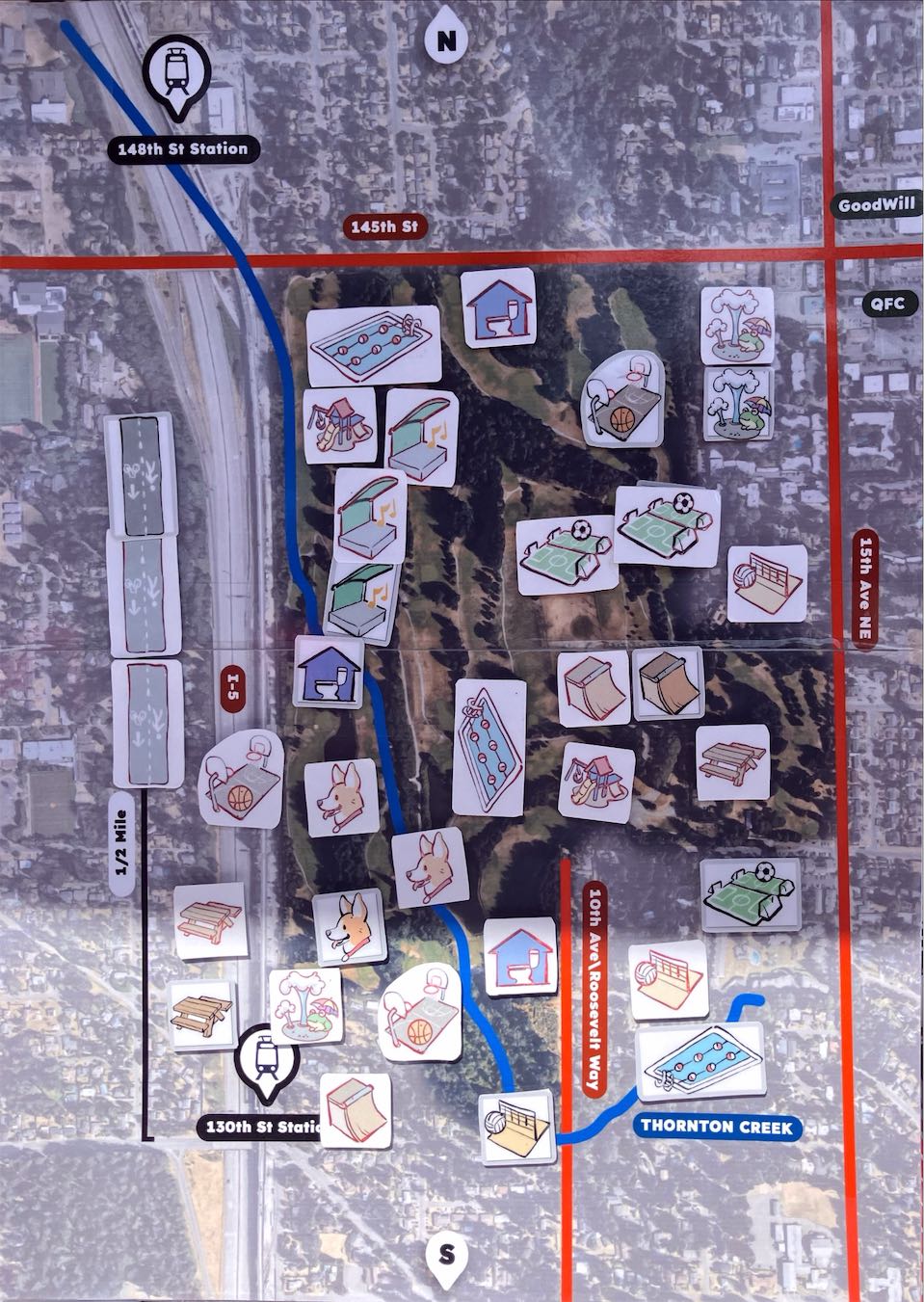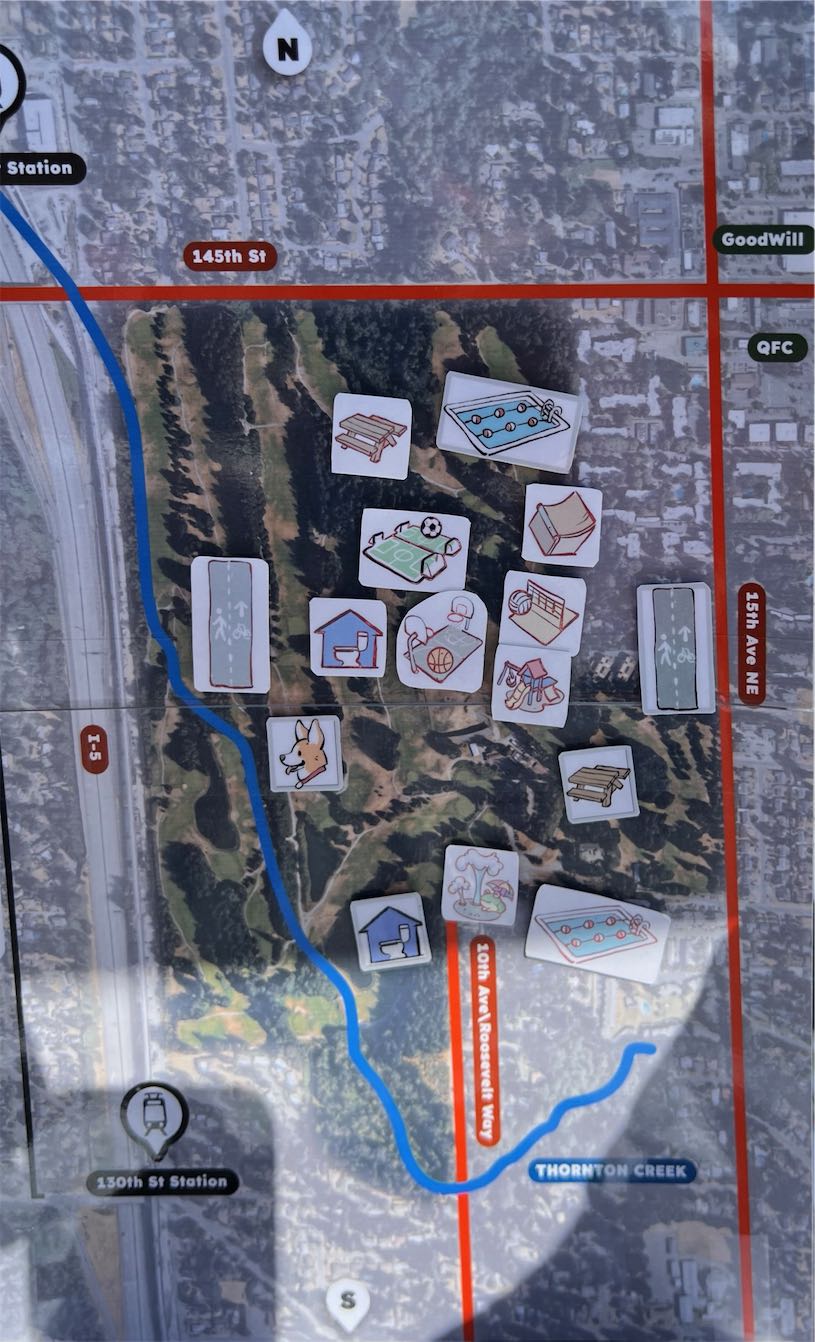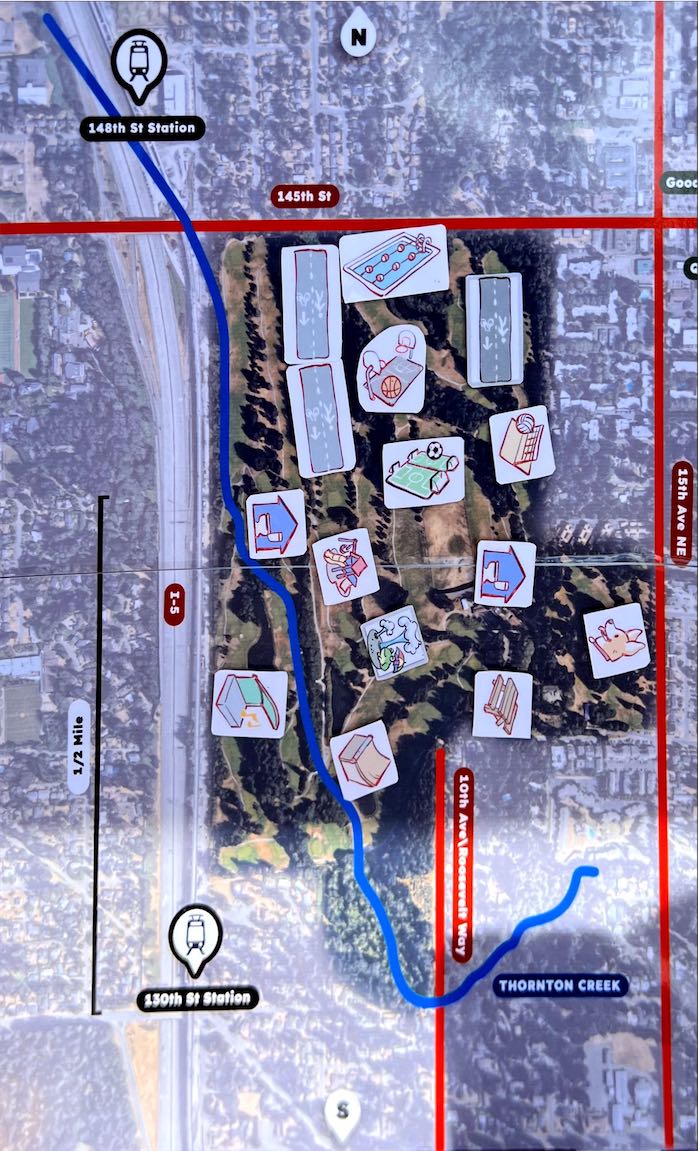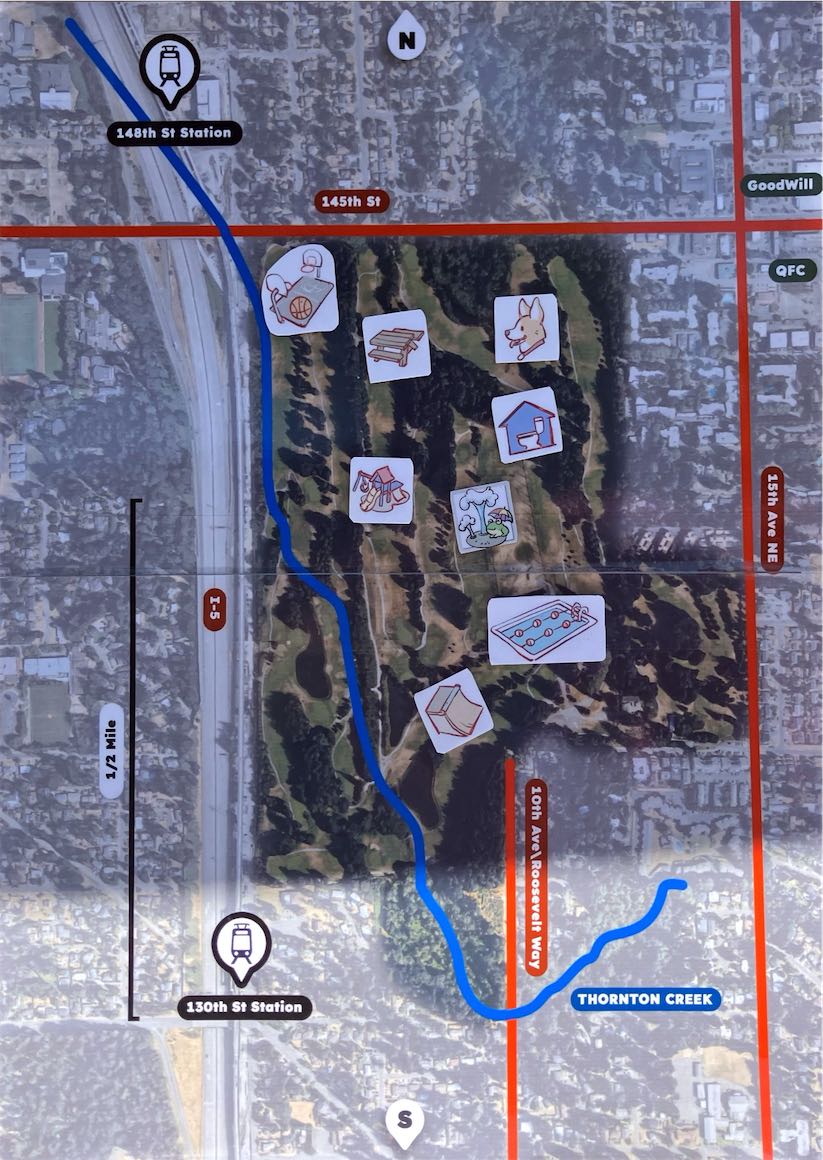Park Designs
3 minutes
UW College of Built Environments Student Designs #
In 2023, a team of University of Washington students in the Community, Environment, & Planning program conducted a site analysis of “Jackson” Park. They students developed conceptual redesign proposals of the public park.
9-Hole Alternative #
This proposal reduces the golf course to a 9-hole course and maintains the driving range. The site prioritizes the restoration of Thornton Creek, expanding the riparian corridor to span the entire creek, and includes the addition of a wetland in the Southwest corner surrounding the water retention ponds. A P-Patch community garden exists in the Southwest corner, providing space for community stewardship. A walking/rolling track is included that is able to safely go through the golf course, interacting with forest restoration areas… A key takeaway of this alternative is that multiple forms of recreation can exist alongside golf - they do not have to be mutually exclusive.
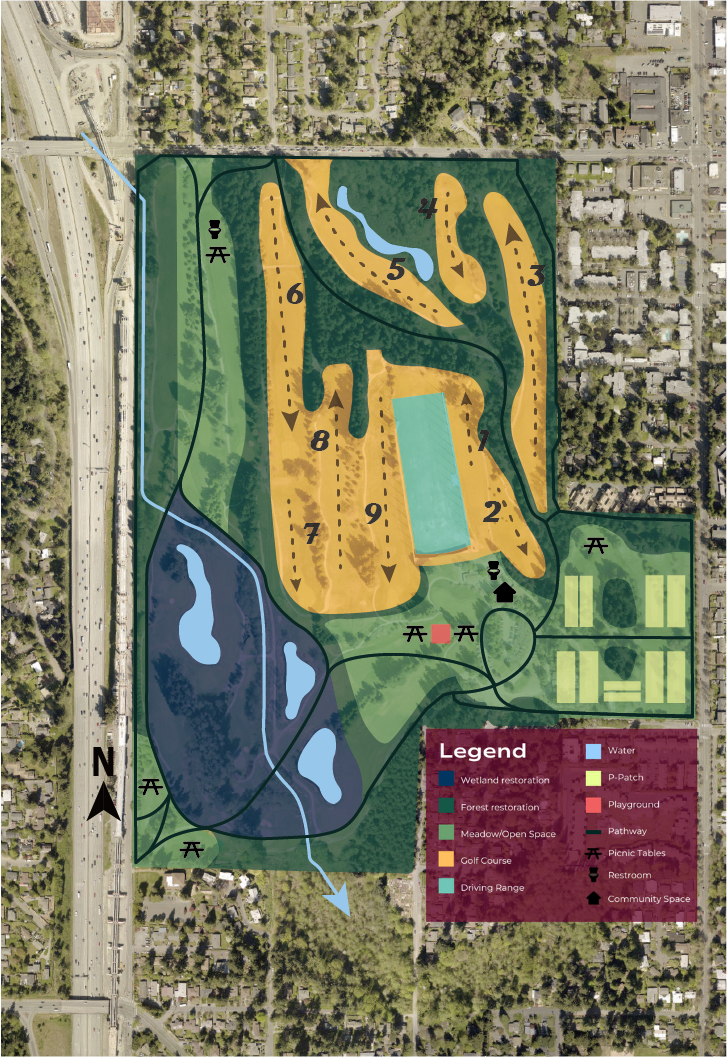
Park-Only Alternative #
Park-Only Alternative: The park only alternative imagines the park without golf as a recreational use. Along with recreational and ecological features presented in the 9-Hole alternative, we see a drastic increase in opportunities. Along with an increase of open green space, a multi-use play field and an amphitheater is included. An off-leash dog park is also included in the Northeast corner, along with an expanded walking/rolling track to increase connectivity between the park corners and amenities. Additionally, forest restoration is also prioritized. The weakness of this alternative lies in the need for maintenance of many different facilities. A key takeaway of this alternative is that without golf, there is room for many recreational activities.
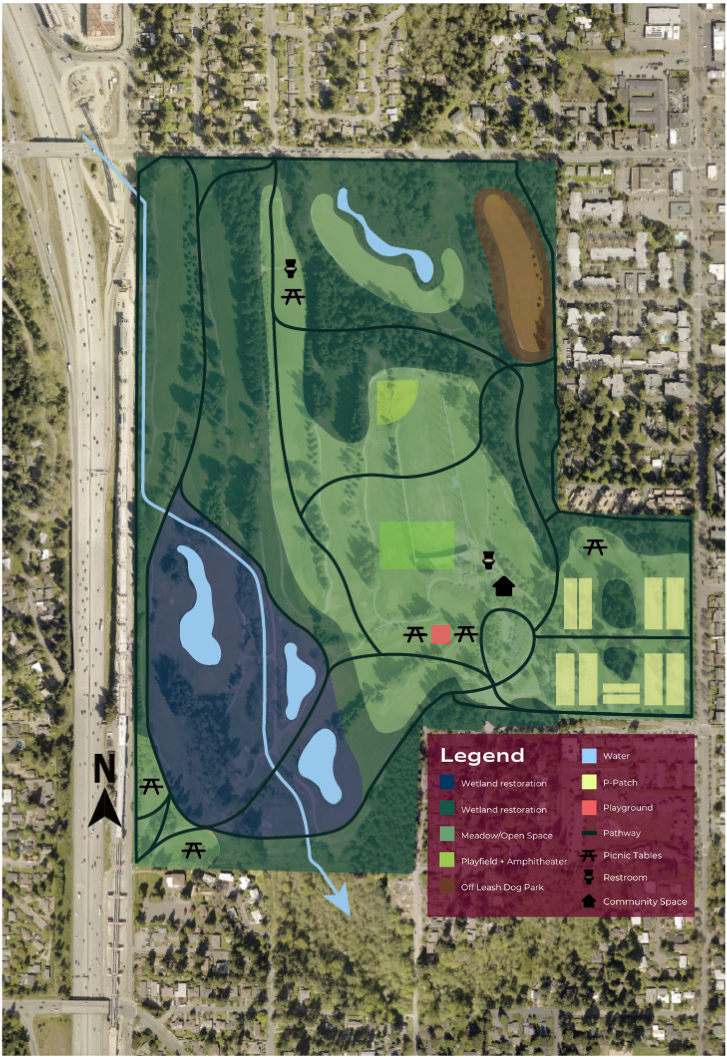
Housing Alternative #
The housing alternative imagines the park layout if there were housing on the park site. Opportunities for housing are identified on each corner of the park. Housing on the Southeast corner takes place of half of the P-Patch from previous alternatives, while the dog park is placed around the water retention pond to make room for housing on the Northeast corner. Housing on the park would be effective in connecting the community to the park, as the housing is integrated into the park, contributing to transit-oriented development goals. An important barrier is that this alternative would require overcoming Initiative 42, which would be a long and time consuming process. However, this alternative shows that there is space in this park for both housing and all of the proposed recreational uses.
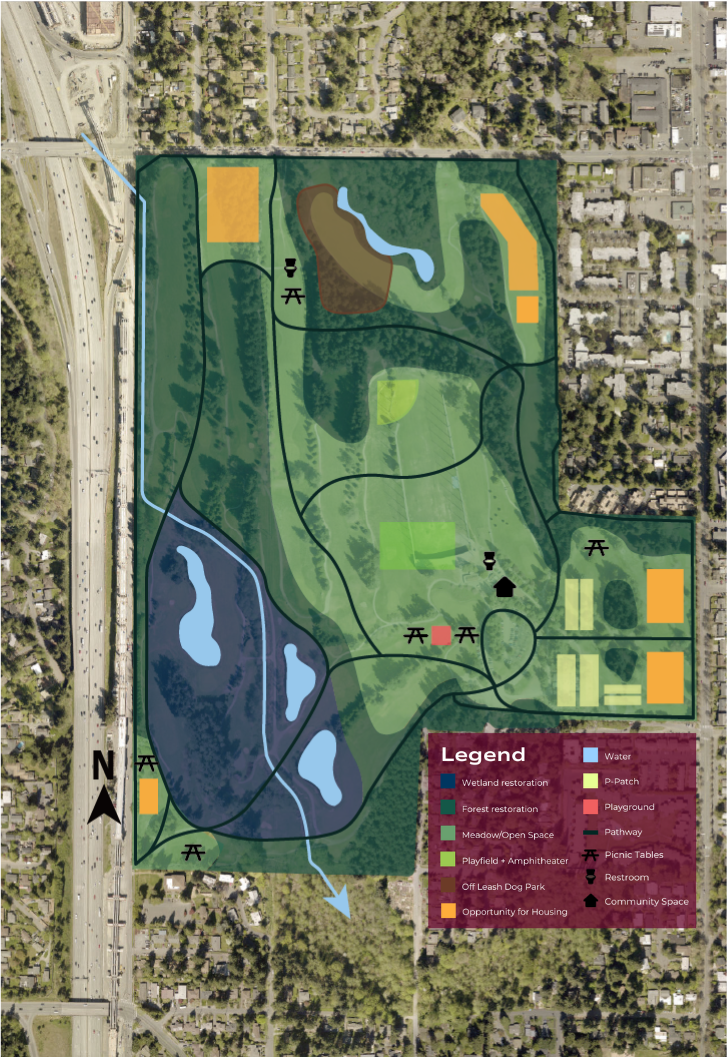
Community Designs! #
We conducted outreach at multiple events where community members of all ages could design the “Jackson” Park of their dreams.
